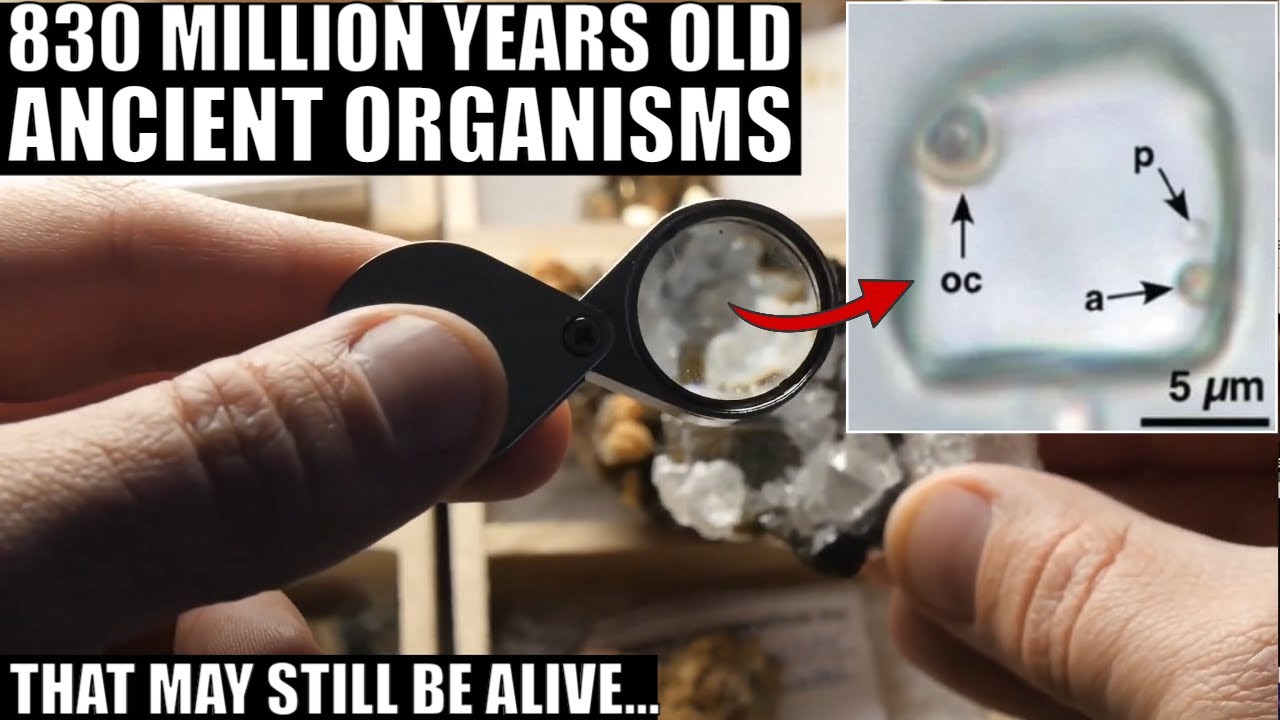The research paper in GeoScienceWorld, May 2022, is “830-million-year-old microorganisms in primary fluid inclusions in halite”. Full text is available at the link; here is the abstract:
Primary fluid inclusions in bedded halite from the 830-m.y.-old Browne Formation of central Australia contain organic solids and liquids, as documented with transmitted light and ultraviolet–visible (UV-vis) petrography. These objects are consistent in size, shape, and fluorescent response with cells of prokaryotes and eukaryotes and with organic compounds. This discovery shows that microorganisms from saline depositional environments can remain well preserved in halite for hundreds of millions of years and can be detected in situ with optical methods alone. This study has implications for the search for life in both terrestrial and extraterrestrial chemical sedimentary rocks.
A paper published in Nature in 2000, “Isolation of a 250 million-year-old halotolerant bacterium from a primary salt crystal” reported:
Bacteria have been found associated with a variety of ancient samples, however few studies are generally accepted due to questions about sample quality and contamination. When Cano and Borucki isolated a strain of Bacillus sphaericus from an extinct bee trapped in 25–30 million-year-old amber, careful sample selection and stringent sterilization techniques were the keys to acceptance. Here we report the isolation and growth of a previously unrecognized spore-forming bacterium ( Bacillus species, designated 2-9-3) from a brine inclusion within a 250 million-year-old salt crystal from the Permian Salado Formation. Complete gene sequences of the 16S ribosomal DNA show that the organism is part of the lineage of Bacillus marismortui and Virgibacillus pantothenticus . Delicate crystal structures and sedimentary features indicate the salt has not recrystallized since formation. Samples were rejected if brine inclusions showed physical signs of possible contamination. Surfaces of salt crystal samples were sterilized with strong alkali and acid before extracting brines from inclusions. Sterilization procedures reduce the probability of contamination to less than 1 in 10^9.
A 2021 paper in Microbial Biotechnology, “Water is a preservative of microbes”, argued:
Water is the cellular milieu, drives all biochemistry within Earth’s biosphere and facilitates microbe-mediated decay processes. Instead of reviewing these topics, the current article focuses on the activities of water as a preservative—its capacity to maintain the long-term integrity and viability of microbial cells—and identifies the mechanisms by which this occurs. Water provides for, and maintains, cellular structures; buffers against thermodynamic extremes, at various scales; can mitigate events that are traumatic to the cell membrane, such as desiccation–rehydration, freeze–thawing and thermal shock; prevents microbial dehydration that can otherwise exacerbate oxidative damage; mitigates against biocidal factors (in some circumstances reducing ultraviolet radiation and diluting solute stressors or toxic substances); and is effective at electrostatic screening so prevents damage to the cell by the intense electrostatic fields of some ions. In addition, the water retained in desiccated cells (historically referred to as ‘bound’ water) plays key roles in biomacromolecular structures and their interactions even for fully hydrated cells. Assuming that the components of the cell membrane are chemically stable or at least repairable, and the environment is fairly constant, water molecules can apparently maintain membrane geometries over very long periods provided these configurations represent thermodynamically stable states. The spores and vegetative cells of many microbes survive longer in the presence of vapour-phase water (at moderate-to-high relative humidities) than under more-arid conditions. There are several mechanisms by which large bodies of water, when cooled during subzero weather conditions remain in a liquid state thus preventing potentially dangerous (freeze–thaw) transitions for their microbiome. Microbial life can be preserved in pure water, freshwater systems, seawater, brines, ice/permafrost, sugar-rich aqueous milieux and vapour-phase water according to laboratory-based studies carried out over periods of years to decades and some natural environments that have yielded cells that are apparently thousands, or even (for hypersaline fluid inclusions of mineralized NaCl) hundreds of millions, of years old. The term preservative has often been restricted to those substances used to extend the shelf life of foods (e.g. sodium benzoate, nitrites and sulphites) or those used to conserve dead organisms, such as ethanol or formaldehyde. For living microorganisms however, the ultimate preservative may actually be water. Implications of this role are discussed with reference to the ecology of halophiles, human pathogens and other microbes; food science; biotechnology; biosignatures for life and other aspects of astrobiology; and the large-scale release/reactivation of preserved microbes caused by global climate change.
Full text is available at the link.
